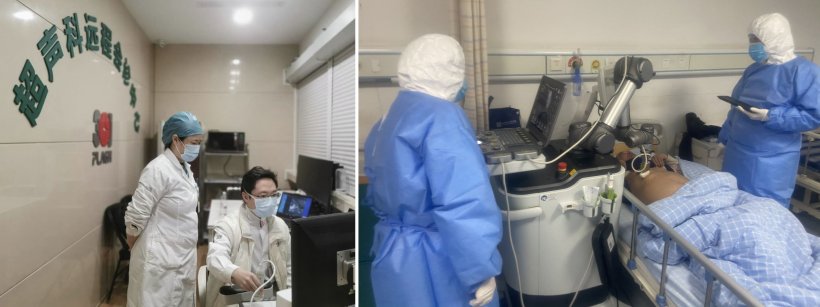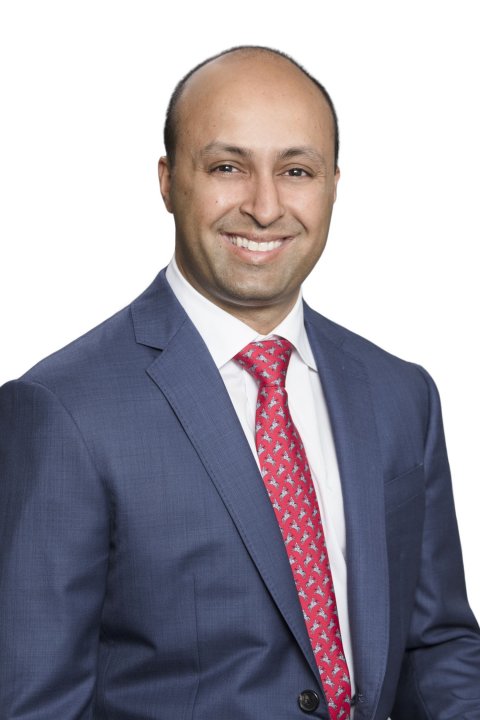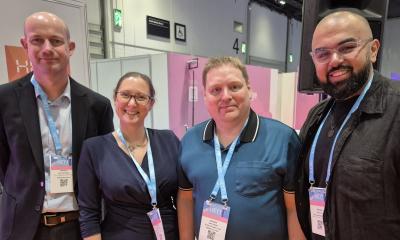Article • Assessing potential values
5G: The impact of wireless technology in healthcare
In a virtual roundtable 5G discussion five healthcare IT experts, three senior executives from major USA medical centres and two consultants, discussed questions posed by members of the Healthcare Information and Management Systems Society (HIMSS).
Report: Cynthia E Keen
5G technology transmission speed is 10- to 100-fold quicker than third and fourth generation technology. It dramatically reduces latency, delay and response in data transmission from about 20 milliseconds on a 4G network to around 1-2 milliseconds – critical during interactive communications. In 2013, the European Commission (EC) established a Public-Private Partnership on 5G (5G PPP) to accelerate research and innovation in the technology and, in 2016, developed a European 5G Action Plan for Europe to launch 5G services in all EU member states by the end of 2020. As of June 2020, 12 member states, plus the UK, published national 5G roadmaps, according to the European 5G Observatory, supported by the EC to monitor 5G market developments.
Recommended article

Article • Mobile data transfer
5G makes tele-surgery fit for the future
A 4G symbol next to the signal strength bar on a smartphone assures fast data transmission. 5G, the next generation of technology, is already waiting in the wings and could herald a new era for tele-surgery, PD Dr. Michael Kranzfelder is convinced. However, there are a few obstacles to overcome first.
USA telecommunications companies are launching various 5G initiatives. In 2019, Rush University Medical Center in Chicago became the first hospital system to deploy 5G, initially to replace its expensive, traditional, wired communications infrastructure with a wireless one. Saving: millions of dollars. With HIMSS vice president Stephen Wellman moderating, the roundtable, ‘Removing Bandwidth Barriers: Impact of 5G in Healthcare’, discussed how 5G could help providers during the coronavirus pandemic, the benefits of 5G for first responders, and whether 5G will inspire innovative new healthcare products.
The USA’s commercial healthcare model has created costly and massive inefficiencies of treatment, especially for specialist or complex treatment; inequalities based on income and health insurance, and a geographic imbalance of medical resources, both well-trained practitioners and clinical specialists as well as medical equipment. The hope is that 5G can help change this.

John Donohue, Vice President of Information Services Enterprise Services of Penn Medicine in Philadelphia, spoke of those travelling great distances several times to a healthcare facility before even seeing a specialist but, with 5G, they might have a remote consultation with a primary care physician and additional specialists before having in-person visits. Real-time telehealth could reduce ‘red tape’, expedite diagnosis and treatment, increase access to clinical experts, and lower costs.
Anshul Pande, Vice President and Chief Technology Officer of Stanford Children’s Health in Stanford, California, said that small USA hospitals, facing bankruptcy or closure, could benefit from 5G because of its tools to connect instantly to large medical centres, to gain services such as immediate specialist consultations. Other applications: hospital-to-hospital services, e.g. consultations for emergency and surgical cases, and remote intensive care unit (ICU) monitoring and assistance. Pande also said 5G telehealth would help in congested urban areas. Driving a few miles in San Francisco Bay can take hours. A 15-minute medical real-time interactive video consultation could avoid wasted time.
Michael Gibbons MD, CEO of digital health innovation company Greystone Group, and Chief Health Innovation Advisor to the Federal Communications Commission’s Connect2Health Task Force, agreed. ‘5G will enable interactions with patients as if they were in a healthcare facility.’
In a 5G article in the Irish Journal of Medical Science (July 2020), Gerard Marshall Raj MD, of the Sri Venkateshwaraa Medical College in Puducherry, India, concurs that, by enabling a single provider to interact with multiple patients needing interventions, 5G could expand limited healthcare provider resources.

© MGI Tech Co., Ltd.
Improving access
5G’s ability to reach areas lacking healthcare and telecommunications services could expand them, said Callie Patel, Innovation Consulting Director at Healthbox, a HIMSS Solution and healthcare advisory firm. Telehealth, developed for rural areas in the ‘80s, is strongly supported by rural providers and 5G capabilities could, he believes, hugely boost those services. ‘An individual in an area miles from a doctor’s office, or hospital, is restricted to a phone call or smartphone face-to-face video encounter,’ said Vishal A Jain, Vice President of Information Systems and Technology at the University of Maryland Medical System, Baltimore. ‘If it’s possible to run a lab test, and get cloud infrastructure and artificial intelligence (AI) involved to help with care, physicians may be able to safely, effectively deal with chronic or acute issues remotely.’
5G benefit to responders

In an emergency ambulance, 5G replacing 3G networks means A&E physicians can receive real-time health status data, and images instantaneously. ‘A major challenge has been transmitting enough data to a hospital’s emergency team,’ said Pande. ‘With 5G they could initiate treatment as soon as the patient arrives, or in the ambulance.’ And, Donohue and Gibbons added, 5G could benefit a stroke patient living far from hospital, by receiving specialised drugs to counteract stroke damage quicker than the time taken to reach hospital. However, only knowledgeable physicians should order such dangerous and powerful drugs. Also, if emergency physicians provide real-time remote consultations, first responders might then provide on-site treatment or direct patients to an emergency care facility, rather than hospital. Jain said the University of Maryland Medical System is working with Baltimore city to do this, because hospital resources are strained by Covid-19. Telehealth consultations surged during the pandemic. Penn Medicine needed to set up physical telecommunications networks at remote testing sites. ‘If a 5G network was available, this would not have been necessary,’ Donohoe said. 5G availability could also enable remote monitoring of patients with exposure to Covid-19.
Other applications
These include robotic surgery, augmented and virtual reality applications to simulate surgery for physician training, and home care and remote patient monitoring, such as non-interventional blood sample analysis, seizure prediction, drug intake and dispensing. The HIMSS experts believe that, as 5G is deployed, the development of smart personal healthcare products and consumer apps will explode.
01.12.2020











